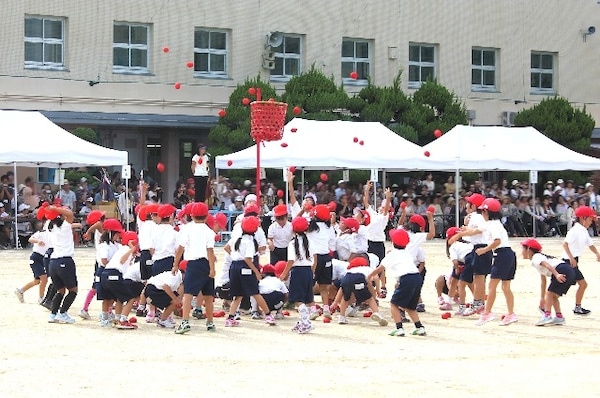Teaching Elementary School 101
4. Study Rates & Standards

Hi, friends! has enough lessons for one per week throughout the school year. While some schools opt to do more English, once a week is the most common pace.
Note that students are not tested on any of the text content, and goal of the Ministry of Education, Sports, Science, Culture and Technology (MEXT) remains to “build a foundation for communication skills” rather than achieving any quantifiable results. This also means that, while students are introduced to the appearance of the alphabet, they are not formally taught how to write it in English class.
That said, Japanese kids are taught the Roman alphabet in grade four. But this is a simplified version for the purpose of typing, and ignores phonetics in favor of consistency—meaning, for example, “shi” is typed as “si” and “tsu” is typed as “tu,” the legacy of which can be seen in many junior high school students confused about how to write their names years later.
The upshot is that elementary school students neither take notes nor have the ability to do so—their entire stock of English knowledge is based on what they remember through exposure in their once-weekly English classes. This means songs, rhythms, repetition games and memory exercises are key to achieving long-term retention while still keeping things fun and communicative.
Of course, many kids pick up English elsewhere, but you can't count on it. In fact, you need to ensure that everyone, including the weakest students, can feel successful in English class: MEXT's other key objective is counteracting the negative image of English many students develop by the time they finish junior high.
5. Working with Kids

6-year-old students can be so enthusiastic they will literally sweep you off your feet. Older kids, meanwhile, can display intellect and perception that will knock your socks off.
Of course, alongside these joys come the classroom management challenges of directing enthusiasm where you need it to go, and sparking interest in 12-year-olds who may be on the edge of tuning out.
The secrets to success are your planning and your classroom persona. You need to develop a magnetic, enticing classroom personality that keeps your students wondering what exciting thing you’re going to pull out next, and you need to know your lesson back to front so the class’ attention never flags while you check your notes or fumble for your next prop.
It’s a bit like being a stage magician, except every member of your audience is a participant—and that participating “audience” may have up to 40 people! Yet you also need to be able to adapt to the class’ needs and be ready to modify your plan, rather than steamrolling ahead when it becomes clear the students aren’t following along. The keyword for elementary school is “dynamic.“
6. Special Needs

https://diparenting101.wordpress.com/category/parenting/special-needs/
Most elementary schools will have a few students with special needs. Depending on local resources, these students may have their own special class, or they may take part in regular lessons, likely with a dedicated support teacher.
These students usually have mild mental disabilities that may or may not affect their mobility (children with more serious disabilities will typically be placed in a dedicated special needs school). It’s a good idea to find out if any of your classes will have special needs students so you can ensure that your activities won’t put these kids in a position where they feel they can’t take part.
If you teach a dedicated special needs class, try to swing by the classroom in advance to see what kinds of activities they normally do with their teacher and what kinds of games the students like, then find ways to incorporate these into your lesson plan. The class will likely be very small, so you should have lots of freedom to get to know the kids and where their strengths lie!
7. Other Activities

Elementary schools host a variety of special events like sports days and field trips, all of which are incredible fun to get involved in. If you wander the school during cleaning time, you'll find the kids excited to engage with you (you're a distraction from cleaning!), while lunch is another great time to interact. Kids will be happy to teach you all their favorite games (did you know Japan has Frozen Tag and Kick the Can?), and the only limit to your engagement will be your stamina—because you are, of course, the most exciting and challenging person to chase!
On the other hand, if you really get to know your teachers, you may be invited to join local festivals or teachers' trips, or at the very least get invited to enkai (celebratory drinking parties) after major school events. Be forewarned that enkai can get pricey, and don't expect them to pay just because they invited you!
But remember to keep your head about you even when out on the town. Teachers are expected to be models for their communities, and the smaller the community, the more tightly that adherence will be expected. If you wake up in a hedge in a small town at 11 a.m., everyone you teach will have already seen you by 10.
Teaching in elementary school is, in short, great fun. But to get the most out of it, you need to be ready to wholeheartedly immerse yourself in the experience!



